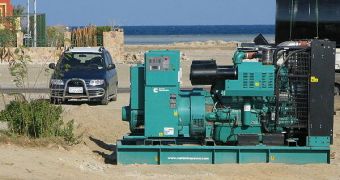The energy efficiency of diesel engines could soon be improved, thanks to a new heat-conversion technique devised by experts at the Oregon State University (OSU). They have discovered a way to tap into the large reserves of waste heat and to turn them into “fuel” for cooling systems, an innovation that could help significantly improve the efficiency of engines in several domains. The US Army has already shown interest in the conversion devices, but ultimately the technology could be implemented in large-scale automobile production lines.
“Our approach will provide a capability that has not yet been achieved for efficiently using waste heat with small-scale systems. The technology has been successfully developed and we should have a working prototype ready for demonstration by this summer,” OSU professor of mechanical engineering Richard Peterson says.
According to predictions, the new heat-reuse system will improve fuel efficiency by 20 to 30 percent, and could be used inside vehicle engines, in factories, or in any other places where waste heat is generated. The power thus gained could be harnessed for air conditioning or electricity, depending on the needs.
“Right now, about 75 percent of the fuel energy in most stationary diesel generators used to produce electricity is lost in the form of waste heat. And the military often needs these generators to operate air conditioning for advanced electronic equipment and other applications. So, we're using that waste exhaust heat to drive an expander-compressor cycle that provides cooling,” Peterson shares.
He goes on to say that, “Since this technology would allow you to produce electricity or cooling whenever something is hot, it might be an ideal complement to a 'smart' energy system that could provide extra power during peak demand periods. We can now take heat and use it to create either electrical power, heat or cooling. It's not yet clear what all the possible applications will be.”
The first application will most likely be a five-kilowatt cooling system, which will provide about the same level of cooling as an automobile air-conditioner system. The Army is very interested in this type of devices, Peterson tells, at it would allow it to deploy high-tech forward command posts, which often operate sophisticated equipment that needs a lot of cooling.

 14 DAY TRIAL //
14 DAY TRIAL //